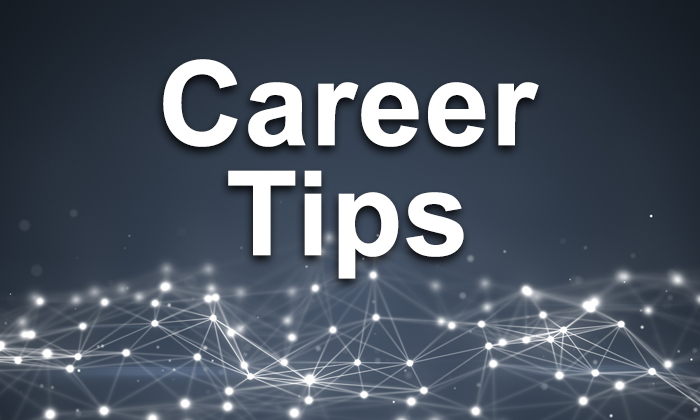Can your résumé survive a ten-second scan from a recruiter and still make it into the YES pile?
If you are targeting non-academic roles, you will need to create a résumé for each job application. This article will discuss the many strategies you can use to develop effective written communications, and how to provide a list of relevant accomplishments linking your skills to the needs of the employer. If you do not send the right message your document will not be read.
As you create your résumé you need to consider your strategy, the format of your message, and the overall visual presentation. This key document can serve many purposes. It can be a marketing tool that highlights your academic and work history. It can serve as a reminder to an employer after an interview. It can also be a way to direct an interview by strategically highlighting how your skills and accomplishments match the job description.
Before you begin writing, consider the following questions:
- What positions are you targeting?
- What are your accomplishments/successes/best qualities?
- What skills are most relevant to your targeted audience?
- What roles are you pursuing? Technical, research, leadership, etc.
- What size organization is right for you?
- What company environment would you be compatible with, or comfortable working in?
When answering these questions, develop a list that will help you make better decisions as you pursue jobs/professions that align with your interest, skills, and work style. Emphasize your accomplishments/successes and focus not only on what you did, but also on how you did it, and positive results from your efforts. What are your strongest selling points? Are they apparent in your current document? What 4–5 things do you want employers to know about you? Don’t forget your behavioral assets, such as the ability to lead a project, strong verbal and written communication skills, and the ability to work in a collaborative environment with a multidisciplinary team.
Résumé Content
Research the job and employer so you better understand their specific needs. This will help you align your skills more effectively. Information gathered during your networking and research can also provide context on the employer’s needs. Reviewing company websites can provide additional insights to help you align more closely to the job requirements.
Next, tailor your content to both your audience and the job description. Who will be reading your document? The Hiring Manager may focus more on technical skills while Human Resources/Recruiting may look for behavioral skills. In most cases, you should exclude information related to salary expectations, religious or political affiliation, geographical restrictions, relationship status, age, etc. Know your audience and choose, prioritize, and tailor your content to the information needs of the readers. Translate what you do into what is of value to them. Often there are hundreds of applications submitted for one position. A good résumé piques the interest of the reader and prompts them to invite you in for the interview.
As you review the job description, consider this three-step process to identify critical information:
- Read the description and identify all of the technical skills required for the job.
- Now take a second pass and identify all of the behavioral skills.
- Finally, identify the emphasis. Look for phrases such as “must have,” “is required,” “demonstrated ability,” “must be capable,” “in-depth hands-on experience,” etc. These indicate the skills that are critical to the job, and therefore should appear in your résumé. These phrases also help prepare you for the interview process because these skills will be vetted during your interview.
The résumé will contain some standard sections:
Heading: The heading will include your name and contact information. Many people also include a link to their website or LinkedIn profile. Most recruiters use social media to source candidates so it is a good idea to have a rich virtual profile to compliment your résumé.
Education: This includes your educational institutions and the degrees that you earned. Some people also include their advisor and dissertation topic if applicable.
Summary of Qualifications: If you already have work experience, consider using a Summary of Qualifications. This section can help you deliver your message quicker and highlight your skills and expertise up front. Sometimes this section comes before the education section and sometimes after, depending on the job and audience. Here is an actual summary by a PhD in Molecular Biology who listed their summary before the education section. Most of the content corresponded to items in the biotechnology company’s job description:
Highly motivated and innovative Molecular Biologist with specialization in mitochondrial biology, molecular genetics, cell biology, microbiology, and biochemistry. Expertise in development and execution of genetic and biochemistry-based research methods. Passionate about learning new scientific skills. Enthusiastic team player adept at providing leadership while also learning from fellow team members. Experienced in managing multiple projects simultaneously. Effective communicator and teacher that can conceptualize complex biological concepts to audiences with varied expertise.
Skills: The next section can be either your Work/Research Experience or a Skills section, depending on the language used in the job description. If the job requires several technical skills and you possess them, often a prominent skills section can help you align with the employer’s needs. Below is an actual skills section by a PhD in Biological Engineering. Several of these skills were listed in the job description.
SKILLS:
• Pharmacology: Pharmacokinetic, Pharmacodynamic, PBPK, Human GI Tract, IVIVC
• In Silico Analysis: Phoenix WinNonlin, GastroPlus, MATLAB, SimBiology, Python, Excel
• ADME-Tox Assays: Intestinal Absorption, Drug Transporters, Cytochrome P450, LDH
• Analytical Chemistry: HPLC, Mass Spectrometry, Spectrophotometer
• Cell Culture: Bacterial Culture, 2D and 3D Mammalian Cell Culture, Tissue Culture
• Other: Biomaterials, Microfluidics, RT-PCR, Confocal Microscope, Bioreactor, Fermentation
Work/Research experience: The Work/Research experience section will describe your work history in a way that highlights your skills and accomplishments, specifically those that align with the job you are targeting. In most cases your content will be in reverse chronological order, beginning with the most current followed by a sequential history of your accomplishments. When developing your message consider using the PAR (Project, Action, and Result) method to help you create an effective accomplishment statement. Here is an actual example of the PAR process:
Project – Lipid membrane cubic phase investigation
Action – Applied solid state NMR techniques as a member of a team
Result – Distinguished membrane lipids of different phases
Now put them together to create your accomplishment statement:
Member of a team that collaborated on a project of lipid membrane cubic phase investigation and applied solid-state NMR techniques to distinguish lipids of different phases.
When your message is clear and conveys results, it is understood more easily by the reader. Consider this method to help you present your work experience. If you only list what you did, or what you were responsible for, generally your message lacks impact. Here is an actual example of a line item on a résumé showing the before and after version.
Before: Work included research on interface sensitive behavior of materials
After: Collaborated with lab team to develop experimental and theoretical research on interface sensitive behavior of materials using innovative triborheometry fixture/design
Using the PAR method helped this PhD create a more effective message.
In addition, key verbs (action words) help deliver a stronger message e.g. Researched, Created, Developed, Implemented, Led, Managed, Investigated, Collaborated, etc.
Finally, for a winning résumé that can survive the ten-second scan, consider these tips:
Do
- Create a document that is presented in a professional manner.
- Keep the layout simple, well organized, and easy to read.
- Consider a one-page document for undergrads or people with five or fewer years of experience.
- Late in a PhD program, a postdoc, or someone with five plus years of experience can be two pages.
- Be consistent with bolding, capitalization, or italics.
- Include quantifiable measurements/results whenever possible.
- Always have someone proofread your document for spelling and grammar mistakes.
- Always research the employer/job and tailor your résumé to each position.
- List accomplishments and skills in order of importance to the job.
Don’t
- Include personal information, salary requirements.
- Exaggerate or lie.
- Use negative or neutral words or phrases.
- Use flashy graphics or print that is difficult to read.
- Forget to proofread.
About the author:

Bob Dolan provides career counseling and professional development workshops for the Postdoctoral Scholars program at MIT. He is a Certified Job Search and Career Transition Consultant with experience in the field of Career Management since 2001. Before joining academia, Bob had a private Career Consulting practice and worked with clients across multiple industries, as well as providing career consulting services for a global Career Management firm.































